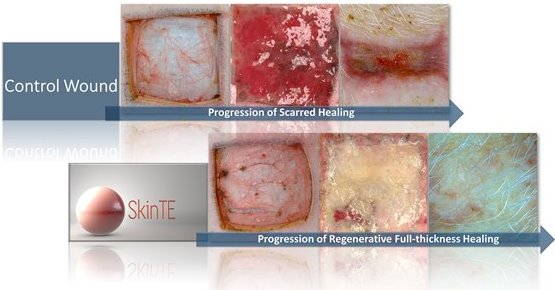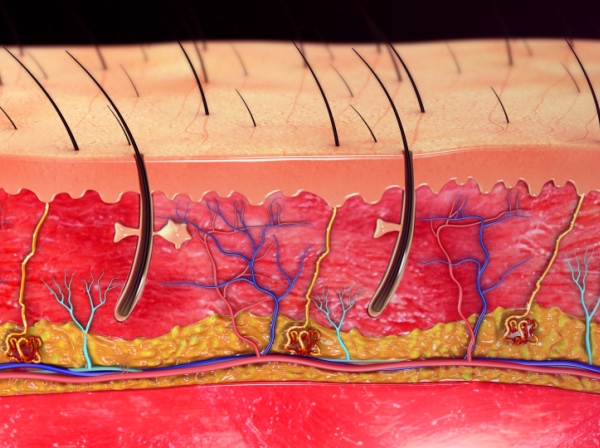A US regenerative medicine company has successfully regenerated “full-thickness skin” on pigs – and plans to begin human trials later this year.
PolarityTE released pre-clinical results last week demonstrating that its lead product, SkinTE (a tissue engineering platform that uses the subject’s own undamaged skin cells), regenerated “full-thickness, organised skin and hair follicles in third degree burn wounds”.
According to the company, the results are “the first known successful regeneration of skin and hair in full-thickness swine wound models (the standard animal model for human skin)”.
In full-thickness burns and wounds “SkinTE demonstrated scar-less healing, hair follicle growth, immediate complete wound coverage, and the progressive regeneration of all skin layers including epidermis, dermis and hypodermal layers”.

Professor Stephen Milner, PolarityTE’s chief clinical officer and the former director of the Johns Hopkins Burn Centers, said the company’s “revolutionary approach to a new form of regenerative healing offers hope to both burn and wound patients, as well as medical providers who have not seen a significant advance in skin regeneration since the 1980s”.
“The efficacy and utility of current approaches to burn and wound care are currently severely limited, and leave a lasting effect on patients who suffer with scarring, disfigurement or even death.
“I believe that this astonishing physician-led team and unique technology platform, which uses the patient’s own tissues, has the potential to revolutionise regenerative medicine and be the foundation for a new paradigm of treatment and outcomes.”
If the human trials are successful, SkinTE could be available on the market within 12 to 18 months – and the PolarityTE platform will provide medical professionals “with a truly new paradigm in wound healing and reconstructive surgery by utilising a patient’s own tissue substrates for the regeneration of skin, bone, muscle, cartilage, fat, blood vessels and nerves”.

